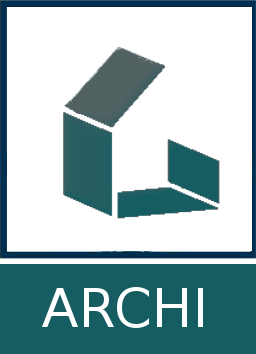La prison : du territoire au bâtiment. Etude de cas autour de quatre prisons wallonnes.
Rocher, Kévin 
Promotor(s) :
Tieleman, David 
Date of defense : 25-May-2020/12-Jun-2020 • Permalink : http://hdl.handle.net/2268.2/9132
Details
| Title : | La prison : du territoire au bâtiment. Etude de cas autour de quatre prisons wallonnes. |
| Translated title : | [en] THE PRISON : FROM TERRITORY TO BUILDING - Case study around four Walloon prisons |
| Author : | Rocher, Kévin 
|
| Date of defense : | 25-May-2020/12-Jun-2020 |
| Advisor(s) : | Tieleman, David 
|
| Committee's member(s) : | Dawans, Stéphane 
Dubois, Christophe 
COLASSE, Jean-François |
| Language : | French |
| Number of pages : | 83 + 35 |
| Keywords : | [fr] Prison [fr] Ville [fr] Réinsertion [fr] Architecture carcérale [fr] Intégration |
| Discipline(s) : | Law, criminology & political science > Criminology |
| Institution(s) : | Université de Liège, Liège, Belgique |
| Degree: | Master en architecture, à finalité spécialisée en art de bâtir et urbanisme |
| Faculty: | Master thesis of the Faculté d'Architecture |
Abstract
[fr] À travers mon Travail de Fin d’Études (TFE), en lien avec ma formation d’architecte, je veux mettre en évidence, d’un point de vue urbanistique et architectural, les caractéristiques qui vont dans le sens et celles qui vont à l’encontre de la réinsertion des détenus dans la société.
Pour ce faire je tente d’apporter quelques éléments de réponses à la problématique suivante : Quelles relations lient le territoire et la prison et quelles en sont les enjeux humains ? Dans un premier temps, j’expose la méthodologie suivie pour le développement de mon TFE. Ensuite, je traite quatre thèmes, de l’échelle de la ville à l’échelle architecturale de la prison. Le premier thème présente la prison et la ville dans laquelle elle s’implante. Dans le second, j’évoque les échanges avec le monde extérieur. J’aborde deux parties que sont l’accessibilité et la mobilité, puis aussi la proximité des partenaires privilégiés (tribunaux, hôpitaux, police). Le troisième thème traite des abords de la prison. Et enfin dans le quatrième, je rentre dans l’enceinte de la prison pour en approcher le parcellaire et son architecture.
Ainsi pour la rédaction du TFE je me base sur ces quatre grandes thématiques. Ma réflexion est nourrit par les observations et les données que j’ai pu consigner dans les fiches comparatives. À la fin de chaque thème, dans un paragraphe « Essentiel à retenir », je rappelle les idées principales.
L’intention de mon TFE en répondant à la problématique énoncée est de dégager le rôle de l’architecte dans l’atteinte de l’objectif social de la peine.
[fr] Through my end of studies work, in connection with my training as an architect, I want to highlight, from an urban and architectural point of view, the characteristics that go in the direction and those that go to against the reintegration of detainees into society.
To do this, I try to provide some elements of answers to the following problem : What relationships link the territory and the prison and what are the human issues ? First, I expose the methodology followed for the development of my TFE. Next, I cover four themes, from the city scale to the architectural scale of the prison. The first theme presents the prison and the city in which it is located. In the second, I talk about exchanges with the outside world. I will touch on two parts: accessibility and mobility, and also the proximity of privileged partners (courts, hospitals, police). The third theme deals with the surroundings of the prison. And finally in the fourth, I enter the prison grounds to approach the plot and its architecture.
So for the writing of the TFE I base myself on these four main themes. My thinking is fueled by the observations and data that I was able to record in the comparison sheets. At the end of each theme, in a paragraph "Essential to remember", I recall the main ideas.
The intention of my TFE in responding to the stated problem is to identify the role of the architect in achieving the social objective of the sentence.
File(s)
Document(s)
Annexe(s)
Cite this master thesis
The University of Liège does not guarantee the scientific quality of these students' works or the accuracy of all the information they contain.


 Master Thesis Online
Master Thesis Online



 All files (archive ZIP)
All files (archive ZIP) S153867ROCHER2020.pdf
S153867ROCHER2020.pdf
